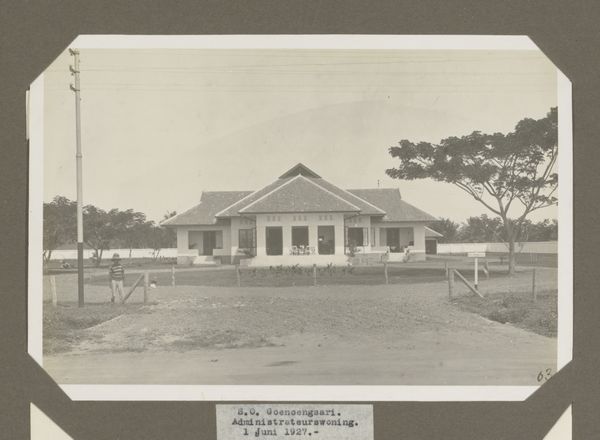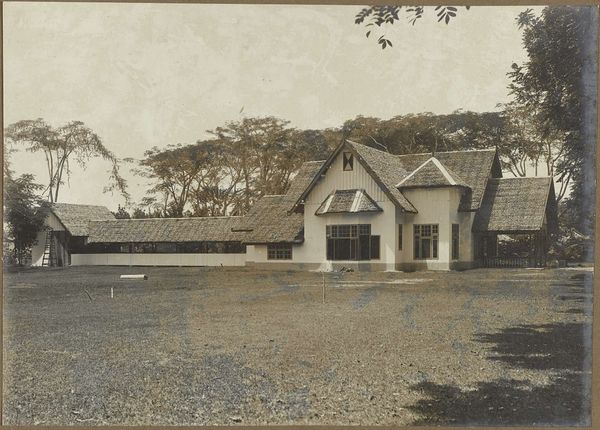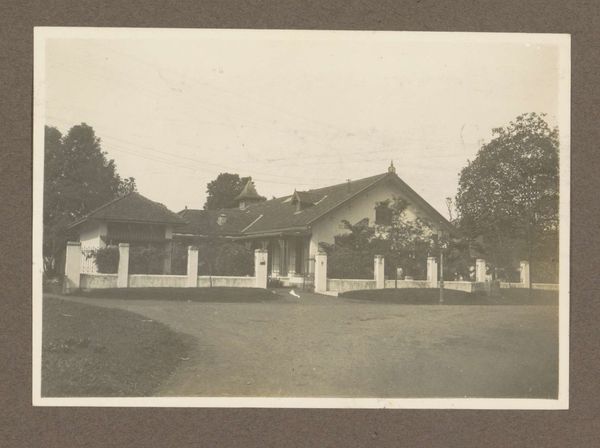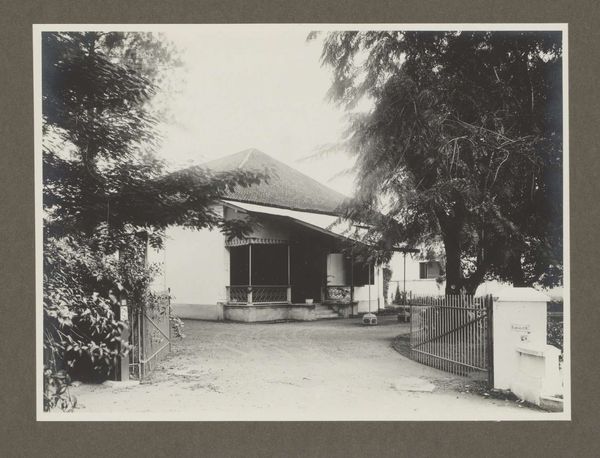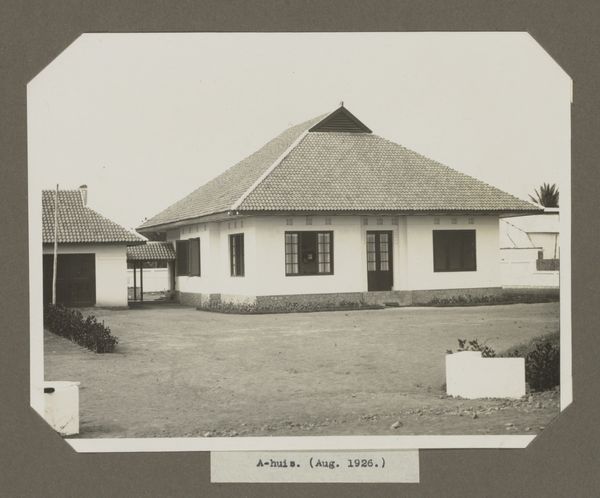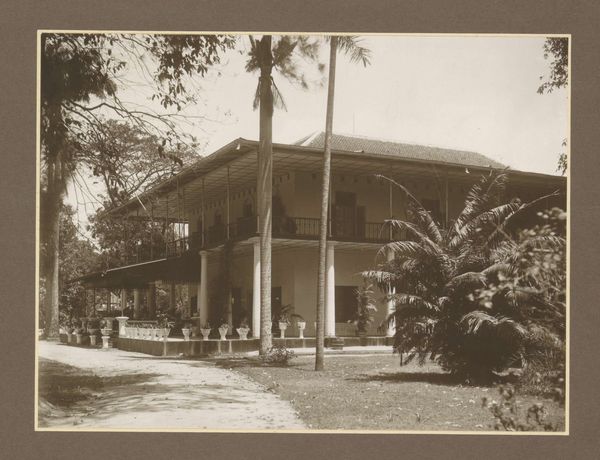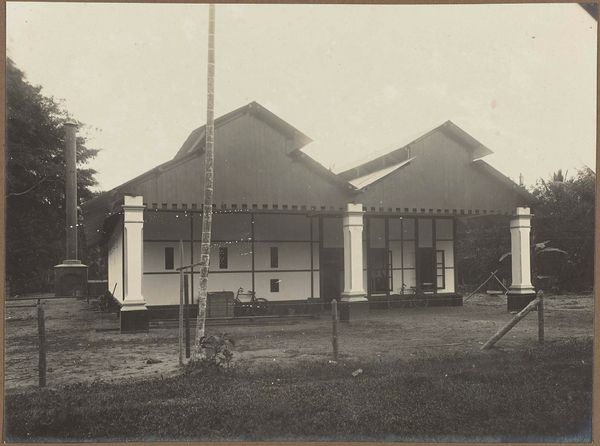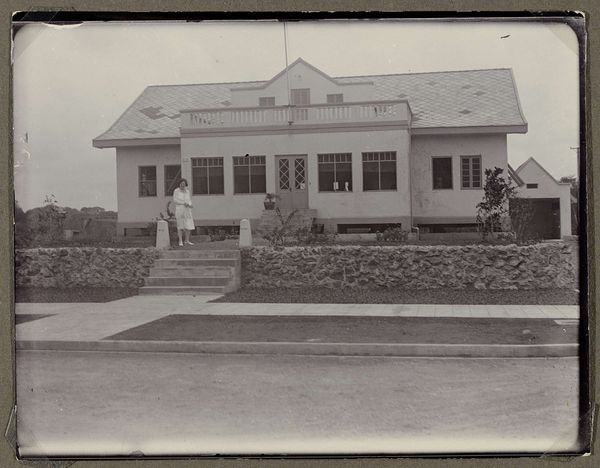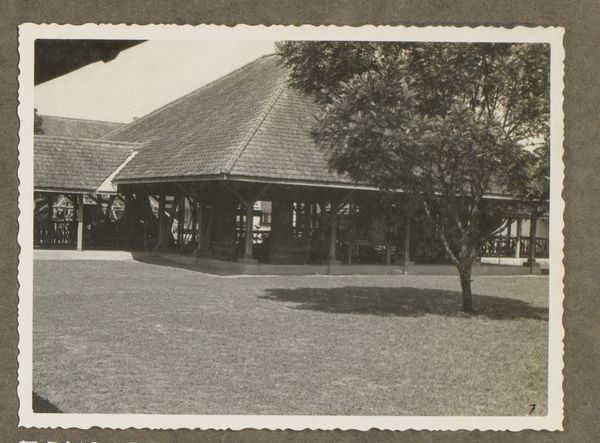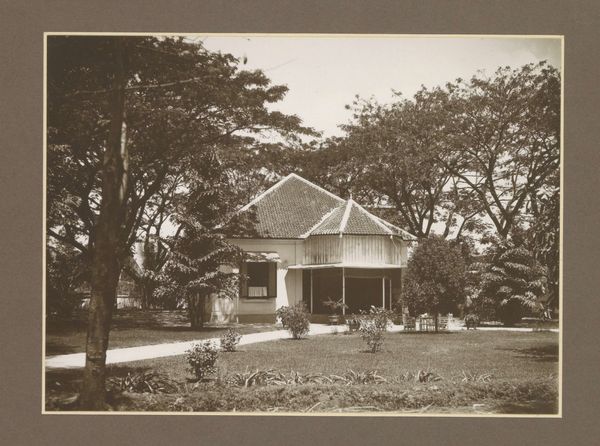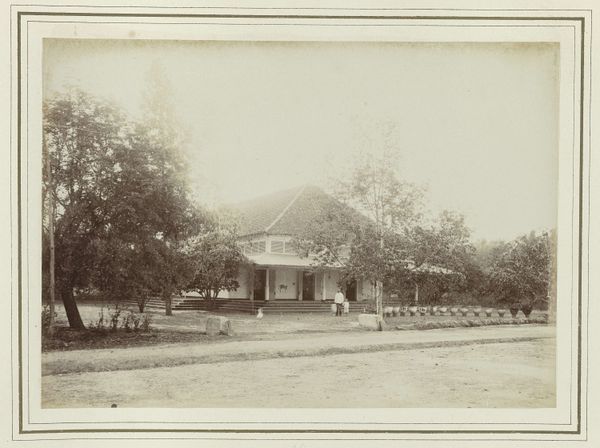
photography
#
dutch-golden-age
#
landscape
#
archive photography
#
photography
#
cityscape
Dimensions: height 211 mm, width 289 mm
Copyright: Rijks Museum: Open Domain
Editor: This photograph, titled "S.O. Goenoengsari. Administrateurswoning. 20-8-27," was taken by Isken sometime between 1927 and 1928. The monochromatic tones create a sense of starkness, and I find myself focusing on the very geometric shapes of the building against the backdrop. How would you interpret the formal structure of this image? Curator: The geometry is indeed striking, and essential to decoding the image. Note how the receding lines of the road draw the eye directly to the building. Consider also how the photographer positions the structure perfectly centered within the frame, with the gateway acting as a formal framing device. Observe, too, the contrast created between the soft, organic shapes of the trees against the rigid architectural lines. How do these choices inform the overall composition, in your view? Editor: I suppose that contrast gives the building a sense of stability and permanence, emphasizing its role as the administrator's dwelling. But what does the emphasis on these formal choices convey? Curator: Precisely. Formally, the strategic centering and the strong leading lines are vital to communicate authority. The stark contrast you observed contributes further to this feeling. Furthermore, the almost clinical composition lends itself to conveying a sense of colonial power and order in this depiction of the Goenoengsari plantation. Would you agree? Editor: I can definitely see that now! Paying close attention to those formal elements really changes how I view the entire photograph. Thank you. Curator: A meticulous observation of compositional elements can illuminate even the subtlest of meanings encoded within an artwork. A valuable lesson, indeed.
Comments
No comments
Be the first to comment and join the conversation on the ultimate creative platform.
